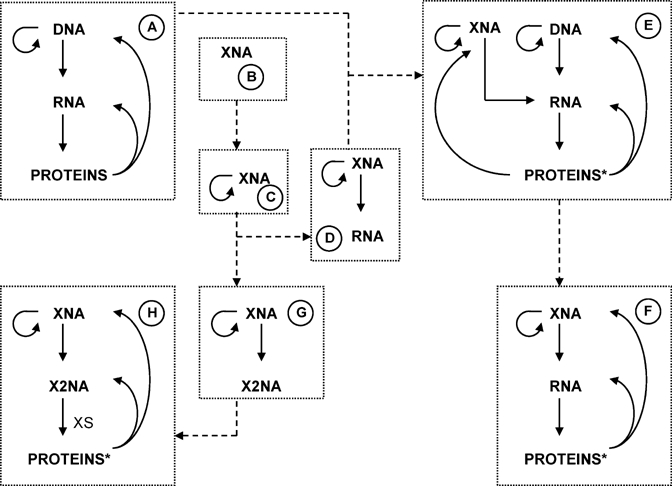Figure 5.

Transition from natural biological architecture to a synthetic architecture is achieved by gradually replacing natural elements with synthetic ones. A: Simplified schematic view on the natural replication, transcription and translation system. B: In the beginning an XNA biopolymer is a “useless” molecule that lacks cognition in the cell. C: XNA-dependent XNA polymerase allow first replication cycles. D: Subsequent XNA-dependent RNA polymerase allows the information in the XNA to be transcribed. E: Installing this system in a natural cell, both DNA and XNA provide RNA. F: Eliminating the DNA from the host cell; the XNA takes over the cell machinery. G: Another possible pathway uses XNA-dependent X2NA polymerase, where X2NA means a second type of XNA that is different from the first one (e.g., when XNA is HNA, X2NA could be TNA). H: To translate X2NA, it will be necessary to modify the ribosome, producing a xenosome (XS) responsible for protein assembly. * Proteins could also be assembled using unnatural amino acids, further enhancing the artificialness of the system. Other applications such as xeno-aptazymes (allosteric xenozymes) are also possible.
